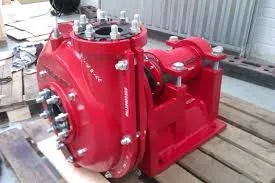Bosnian
- Afrikaans
- Albanian
- Amharic
- Arabic
- Armenian
- Azerbaijani
- Basque
- Belarusian
- Bengali
- Bosnian
- Bulgarian
- Catalan
- Cebuano
- Corsican
- Croatian
- Czech
- Danish
- Dutch
- English
- Esperanto
- Estonian
- Finnish
- French
- Frisian
- Galician
- Georgian
- German
- Greek
- Gujarati
- Haitian Creole
- hausa
- hawaiian
- Hebrew
- Hindi
- Miao
- Hungarian
- Icelandic
- igbo
- Indonesian
- irish
- Italian
- Japanese
- Javanese
- Kannada
- kazakh
- Khmer
- Rwandese
- Korean
- Kurdish
- Kyrgyz
- Lao
- Latin
- Latvian
- Lithuanian
- Luxembourgish
- Macedonian
- Malgashi
- Malay
- Malayalam
- Maltese
- Maori
- Marathi
- Mongolian
- Myanmar
- Nepali
- Norwegian
- Norwegian
- Occitan
- Pashto
- Persian
- Polish
- Portuguese
- Punjabi
- Romanian
- Russian
- Samoan
- Scottish Gaelic
- Serbian
- Sesotho
- Shona
- Sindhi
- Sinhala
- Slovak
- Slovenian
- Somali
- Spanish
- Sundanese
- Swahili
- Swedish
- Tagalog
- Tajik
- Tamil
- Tatar
- Telugu
- Thai
- Turkish
- Turkmen
- Ukrainian
- Urdu
- Uighur
- Uzbek
- Vietnamese
- Welsh
- Bantu
- Yiddish
- Yoruba
- Zulu
Telephone: +86 13120555503
Email: frank@cypump.com
sep . 08, 2024 04:21 Back to list
axial and mixed flow pumps
Axial and Mixed Flow Pumps An Overview
Pumps are essential devices in various industries, facilitating the movement of fluids through systems where gravity alone is insufficient
. Among the diverse types of pumps available, axial and mixed flow pumps play significant roles in numerous applications due to their unique operational characteristics and efficiencies.Axial flow pumps are designed to move fluids along the axis of the pump. The fundamental operating principle involves a propeller that rotates within a casing, drawing the fluid in at the inlet and forcing it out in a straight line at the outlet. This design allows axial pumps to achieve high flow rates, making them particularly useful in applications requiring large volumes of liquid movement, such as in irrigation, drainage, and cooling water systems. Their efficiency in moving fluids with low viscosity and their ability to handle varying flow rates make them a favorable choice in many sectors.
On the other hand, mixed flow pumps combine features of both axial and centrifugal pumps. They generate a flow that is both axial and radial, making them versatile for various applications. The design often consists of an impeller that can achieve high capacities while also generating increased head when compared to axial flow pumps. This characteristic makes mixed flow pumps suitable for medium head applications, including wastewater treatment and industrial processes where a balance between flow rate and pressure is essential.
axial and mixed flow pumps

The choice between axial and mixed flow pumps often depends on the specific application requirements. Axial flow pumps are typically selected for applications where high flow rates with lower pressure requirements are needed. Conversely, mixed flow pumps are selected for applications requiring moderate flow and pressure, bridging the gap between centrifugal and axial flow pump capabilities.
In terms of maintenance, both types of pumps require regular checks to ensure efficient operation. It is crucial to monitor wear on impeller blades, seal integrity, and any potential blockages in the piping system. Proper maintenance can significantly extend the lifespan and efficiency of the pumps.
In conclusion, axial and mixed flow pumps serve critical roles in fluid handling processes across various industries. Their distinctive designs and operational principles cater to specific needs, making them indispensable in applications that require reliable and efficient fluid transport. Understanding the differences between these pump types enables engineers and operators to make informed decisions that optimize system performance and operational efficiency. As industries continue to evolve, the importance of selecting the appropriate pump type will remain pivotal in achieving technological advancements and efficient fluid management.
-
Horizontal Split Case Pump with GPT-4 Turbo | High Efficiency
NewsAug.01,2025
-
ISG Series Pipeline Pump - Chi Yuan Pumps | High Efficiency, Durable Design
NewsAug.01,2025
-
Advanced Flue Gas Desulfurization Pump with GPT-4 Turbo | Durable & Efficient
NewsJul.31,2025
-
ISG Series Vertical Pipeline Pump - Chi Yuan Pumps | Advanced Hydraulic Design&Durable Construction
NewsJul.31,2025
-
ISG Series Vertical Pipeline Pump - Chi Yuan Pumps | Energy Efficient & Low Noise
NewsJul.31,2025
-
pipeline pump - Chi Yuan Pumps Co., LTD.|High Efficiency&Low Noise
NewsJul.31,2025










